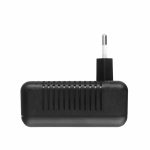Living with a dog can be one of the most rewarding experiences in life. But what happens when your furry friend is deaf? Training a deaf dog may seem like a daunting task, but with the right knowledge, patience, and a lot of love, you can create an amazing bond with your pet. This guide provides comprehensive methods and tips on how to train a deaf dog.
Understanding Deaf Dogs
Before diving into the training methods, it’s essential to understand what it’s like for a dog to be deaf. Deafness in dogs can either be congenital or acquired later in life due to old age, trauma, infection or certain drugs. Dogs with white or merle coats are genetically predisposed to deafness. It’s important to remember that being deaf doesn’t mean your dog is less intelligent or less capable of learning. In fact, deaf dogs are often more in tune with their other senses and can lead perfectly normal lives.
En parallèle : How to Design an Eco-Friendly Terrarium for Tropical Reptiles?
Communication is Key: Visual Signals and Sign Language
Traditionally, dog training relies heavily on voice commands. However, for deaf dogs, this obviously isn’t possible. The use of visual signals and sign language becomes the primary mode of communication.
To start, it’s important to create a sign for each command you want your dog to learn. It’s best to use signs that are distinct and not easily confused with other day-to-day gestures. For example, for ‘sit’, you can hold your flat palm facing upwards and move it upwards.
A lire aussi : Can You Train a Cat to Participate in Agility Competitions?
In addition to handmade signs, you can also adopt American Sign Language (ASL) signs. ASL is a complete and complex language, but your dog won’t need to learn all of it. Just the relevant commands such as ‘sit’, ‘come’, ‘stay’, and ‘good dog’.
Reward-Based Training: Positive Reinforcement
Reward-based training or positive reinforcement is an effective method for all dogs, but it’s especially crucial for deaf dogs. This technique involves rewarding positive behavior to encourage its repetition.
For deaf dogs, this reward can be a treat, a favorite toy, or a gentle petting. The idea is to immediately reward the dog after it correctly responds to a command. This helps the dog associate the action with the reward, encouraging them to repeat the behavior.
Remember, consistency is key in positive reinforcement. Always reward your dog for the desired behavior, and avoid punishing them for undesirable actions. Instead, ignore the behavior you do not want to reinforce.
Using Vibrational Collars: Not a Punishment Device
Vibrational collars, when used correctly, can be an effective tool in training deaf dogs. These devices emit a gentle vibration, not an electric shock, which serves to gain the dog’s attention.
For successful use of a vibrational collar, it’s crucial that your dog associates the collar with positive experiences. You can achieve this by giving your dog a treat or other reward immediately after the collar vibrates.
Socialization: Essential for Well-Rounded Dogs
Socialization is a critical aspect of any dog’s training, and it’s no different for deaf dogs. Socializing your dog involves exposing them to different environments, people, animals, and experiences.
This exposure helps your dog learn how to behave in various situations and reduces their fear of unfamiliar things. Regular visits to the dog park, walks in busy areas, and playdates with other dogs are all excellent ways to socialize your deaf dog.
Safety Measures: Protecting Your Deaf Dog
Safety is a vital concern when caring for a deaf dog. Without the ability to hear, they are more prone to dangers like traffic or not being able to respond to warnings from other dogs.
To protect your deaf dog, always keep them on a leash or in a securely fenced area. Additionally, use a tag or vest that indicates they are deaf, so others are aware.
Remember, training a deaf dog requires patience and consistency, but the reward is a loyal, well-behaved companion. With these methods and tips, you are well on your way to successfully training your deaf dog.
Building Trust and Confidence
Establishing a solid bond of trust and confidence is paramount when training a deaf dog. Remember, your dog may initially feel scared or confused due to the inability to hear. Therefore, it’s necessary to help them understand that they can rely on you, and that they are safe in their environment.
Start by spending quality time with your dog. This could be during grooming, feeding, or simply relaxing together. Use these opportunities to communicate with your dog using visual signals. For instance, a thumbs-up could mean ‘good job’, while a flat hand could signify ‘stop’.
Next, create a secure and predictable environment for your dog. Always feed them at the same times and places. Give them a secure place to sleep and let them know where to find their toys. Maintaining a consistent schedule will help your dog feel secure and confident.
Then, gradually introduce new experiences to your dog. This could be meeting new people, visiting a new environment, or encountering new animals. Ensure these experiences are positive. If you notice your dog is scared or uncomfortable, remove them from the situation and reintroduce the new experience at a slower pace.
Lastly, keep your dog’s health in check. Regular vet visits are crucial. These visits will help detect any potential health issues and ensure your dog is comfortable and healthy. Remember, a healthy dog is a happy dog, and a happy dog is more receptive to training.
Finding Professional Help
While you can do a lot to train your deaf dog at home, there might be situations where professional help is beneficial. For instance, if your dog develops behavioral issues, or you are struggling with certain aspects of training, it might be time to seek professional help.
A professional dog trainer, preferably one with experience in training deaf dogs, can provide invaluable guidance. They can observe your interactions with your dog and provide personalized advice and strategies. Moreover, they can help you understand the unique challenges your dog faces and teach you how to better communicate with and support them.
Similarly, attending dog training classes can be beneficial. These classes provide a structured environment where your dog can learn new skills, meet other dogs, and gain confidence. Choose a class that uses positive reinforcement methods, as they are the most effective and humane.
In some cases, you may also want to consult a veterinary behaviorist. These are veterinarians who have received specialized training in animal behavior. They can help address more severe behavioral issues, such as aggression or extreme fear.
Remember, seeking professional help is not a sign of failure. It shows commitment to your dog’s wellbeing and eagerness to provide them with the best possible care.
The Outcome: A Rewarding Relationship
Training a deaf dog can certainly be challenging, but it can also be extremely rewarding. The journey to understanding and communication deepens the bond between you and your dog, leading to a relationship of mutual trust and respect.
With patience and persistence, your deaf dog can learn to follow commands, behave appropriately and safely, and live a fulfilling life. Their deafness does not make them any less capable or less loving.
Deaf dogs, like all dogs, want to please their owners and enjoy life. They possess an incredible ability to adapt, and with your support, they can overcome their auditory limitations. They rely more on their other senses, and as a result, often develop a keen sense of observation and understanding.
Training a deaf dog reminds us of the remarkable resilience and adaptability of animals. It requires us to think creatively and communicate differently. And when successful, it provides an immense sense of accomplishment.
Ultimately, the goal of training is not just about obedience. It’s about creating a happy, confident, and well-adjusted dog. And in the process, you’ll discover that you’ve not only trained a faithful companion, you’ve also learned a lot about patience, understanding, and unconditional love.













